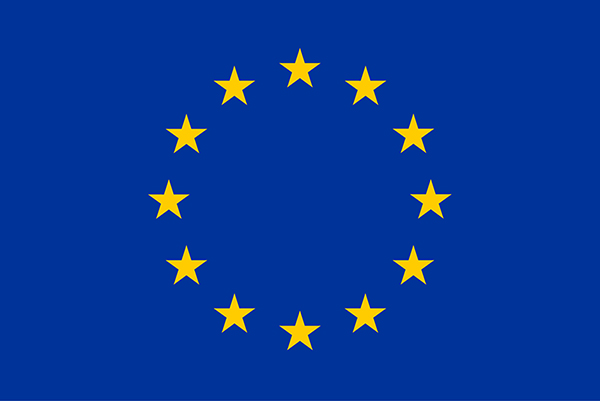Pragmatic exploitation and availability
The Flexible KPIs are likely to be most useful when they reside in the public domain. This ensures that all parties can access and make use of the Flexible KPIs; there is no danger of ‘vendor-lock-in’ or other restrictive structures that inhibit the ability of emergency services to engage with these Flexible KPIs in their change-processes. The objective being: the ‘users’ of the Flexible KPIs must be able to use the Flexible KPIs freely, and furthermore be able to update, modify, extend etc. the Flexible KPIs. This assures that the Flexible KPIs are usable over a long period of time.

The NGES evaluation method and the NEXES Flexible KPIs should be open to the public domain, to avoid vendor-lock-in which may stifle current and future NGES adoption within Europe and beyond. To avoid the Flexible KPIs becoming obsolete, these KPIs are extensible and should remain an active and up-to-date instrument, with its own application group to share experiences, best practices and extensions. Periodical reviews should be established to regularly determine best practices, evaluate and extend the Flexible KPIs.
 Emergency services that start to adopt NGES will likely do so in a multi-year time period. The NEXES Action offers support for the creation of a roadmap and subsequent monitoring of impact for the adoption of NGES technologies. The NEXES Flexible KPIs are proposed as an instrument in planning methodologies to measure an organisation’s progress in achieving and sustaining the NGES impact and taking both quantitative and qualitative aspects into account.
Emergency services that start to adopt NGES will likely do so in a multi-year time period. The NEXES Action offers support for the creation of a roadmap and subsequent monitoring of impact for the adoption of NGES technologies. The NEXES Flexible KPIs are proposed as an instrument in planning methodologies to measure an organisation’s progress in achieving and sustaining the NGES impact and taking both quantitative and qualitative aspects into account.
The two example emergency service organisations introduced earlier are engaging in a multi-year change-process. Before being able to commit to such a long-term process, assurances are needed that the evaluation method will be usable for a long period of time and adaptable when the need arises. Without such assurances, an NGES performance evaluation method cannot be used, as switching evaluation methods during a change process may introduce all kinds of adverse effects.
 As a suggestion for managing and structuring the changes to Flexible KPIs an ‘application group’ is proposed. This application group brings together the Flexible KPIs’ users, fosters discussion and may use a review and re-design process for determining best practices, updates and extensions of the Flexible KPIs. This holds for any user, including users that have different roles (e.g., emergency services vs policy-makers) or be in different stages of NGES adoption.
As a suggestion for managing and structuring the changes to Flexible KPIs an ‘application group’ is proposed. This application group brings together the Flexible KPIs’ users, fosters discussion and may use a review and re-design process for determining best practices, updates and extensions of the Flexible KPIs. This holds for any user, including users that have different roles (e.g., emergency services vs policy-makers) or be in different stages of NGES adoption.
The Flexible KPIs are relevant for Emergency Services:
- Allow evaluation of quantitative and qualitative impact of TC/NGES.
- Customisable to individual context, while ensuring transparency on customisations fostering progress monitoring.
- Support planning and roadmap creation of technology adoption.
- Allow evaluation and performance insight even when technology changes.
The Flexible KPIs are relevant for Policy-Makers and other Decision Makers:
- Emergency services can evaluate their quantitative and qualitative impact of TC/NGES.
- Multiple emergency services may have their own unique evaluations, yet these can be combined for an overall measure of progress.
- The suggestion is that directives should be formulated as (improvements on) KPI scores, not Effect measurements (in general these are very specialised and may not apply to each and every emergency service organisation).
The Flexible KPIs are relevant for Citizens:
- Citizens are an integral part of the business processes of emergency services.
- Citizens’ perspectives on services are important both in determining NGES performance as well as planning and monitoring activities.
This article discussed the importance of placing the Flexible KPIs in the public domain, given its relevance to multiple stakeholders and importance in multi-year change processes. The next article discusses the use of the Flexible KPIs after adoption of NGES technologies.
![]() This blog is number 4 in a series of five articles on the NEXES KPIs Lessons Learned and Recommendations. When you wish to delve deeper into the NEXES Action and its solution to comparing apples and oranges we recommend to read the deliverable D2.4, for more information on the NEXES Recommendations we recommend to read the deliverable D2.5. Below is the list of all the articles in the series:
This blog is number 4 in a series of five articles on the NEXES KPIs Lessons Learned and Recommendations. When you wish to delve deeper into the NEXES Action and its solution to comparing apples and oranges we recommend to read the deliverable D2.4, for more information on the NEXES Recommendations we recommend to read the deliverable D2.5. Below is the list of all the articles in the series:
- ‘Comparing apples and oranges’: The evaluation setting
- Flexible KPIs: Assuring fair, respectful and motivating evaluation
- Playing the ‘what-if’ game: Monitoring and planning with Flexible KPIs
- A public playing field: Pragmatic exploitation and availabaility
- Continuous Improvement: The Flexible KPIs as a tactical aid for emergency services
 Dr. Niek Wijngaards works for AIMTech Consulting Limited in the United Kingdom and True Information Solutions in the Netherlands as senior consultant and solution architect. His focus on user-centered innovation and his work on intelligent systems and scenario-based robust decision-making provides a sound basis for the development of the NEXES Flexible KPI structure. Niek can be contacted at n.wijngaards AT aimtech DOT co DOT uk for Flexible KPI and recommendation-related questions.
Dr. Niek Wijngaards works for AIMTech Consulting Limited in the United Kingdom and True Information Solutions in the Netherlands as senior consultant and solution architect. His focus on user-centered innovation and his work on intelligent systems and scenario-based robust decision-making provides a sound basis for the development of the NEXES Flexible KPI structure. Niek can be contacted at n.wijngaards AT aimtech DOT co DOT uk for Flexible KPI and recommendation-related questions.

 Copyright © 2018, NEXES Research and Innovation Action, All Rights Reserved. The NEXES Action has received funding from the European Union’s Horizon 2020 research and innovation programme under grant agreement No. 653337. The work on the NEXES Key Performance Indicators is co-authored by the Action partners and has benefited from the constructive comments by the reviewers. See the NEXES LinkedIn group
Copyright © 2018, NEXES Research and Innovation Action, All Rights Reserved. The NEXES Action has received funding from the European Union’s Horizon 2020 research and innovation programme under grant agreement No. 653337. The work on the NEXES Key Performance Indicators is co-authored by the Action partners and has benefited from the constructive comments by the reviewers. See the NEXES LinkedIn group ![]() for an overview of NEXES colleagues. All figures Copyright © NEXES unless stated otherwise and all images Copyright © www.openclipart.org unless stated otherwise.
for an overview of NEXES colleagues. All figures Copyright © NEXES unless stated otherwise and all images Copyright © www.openclipart.org unless stated otherwise.




